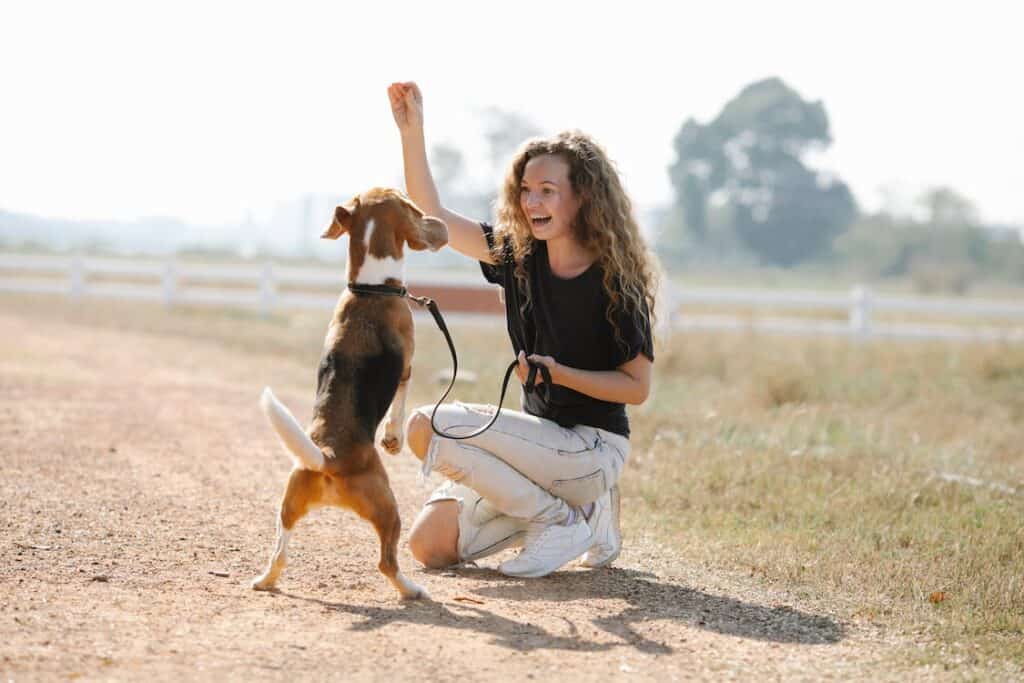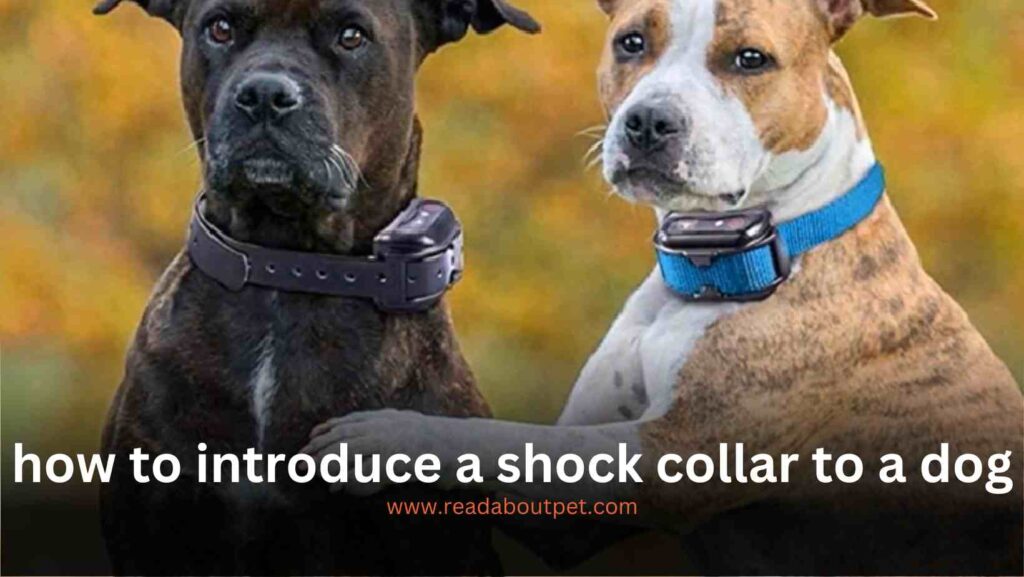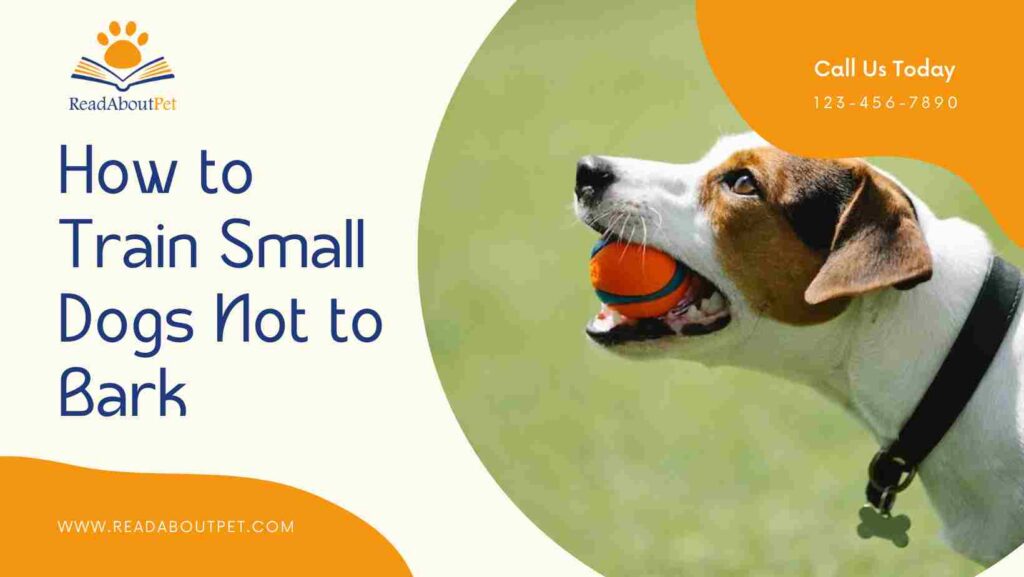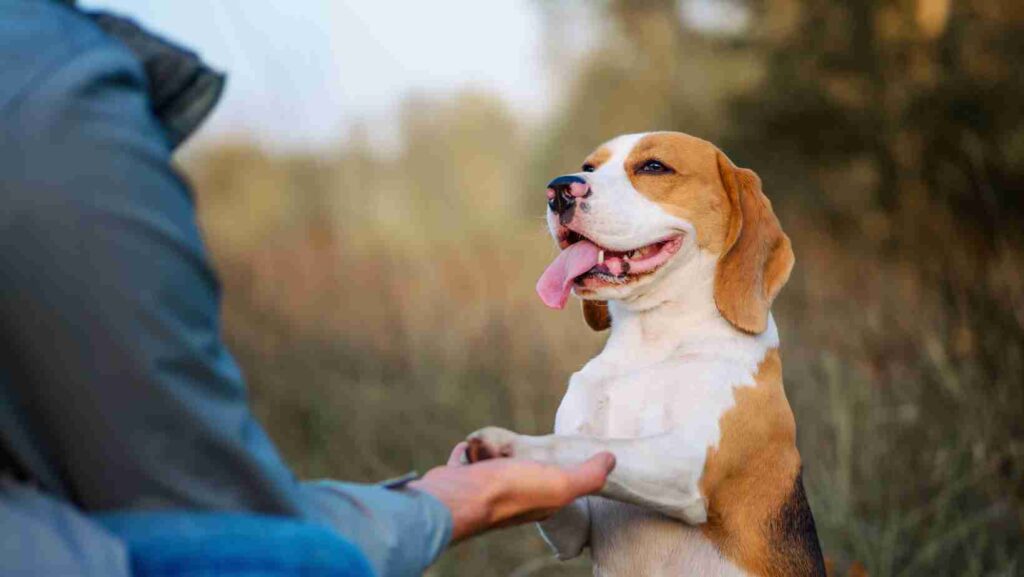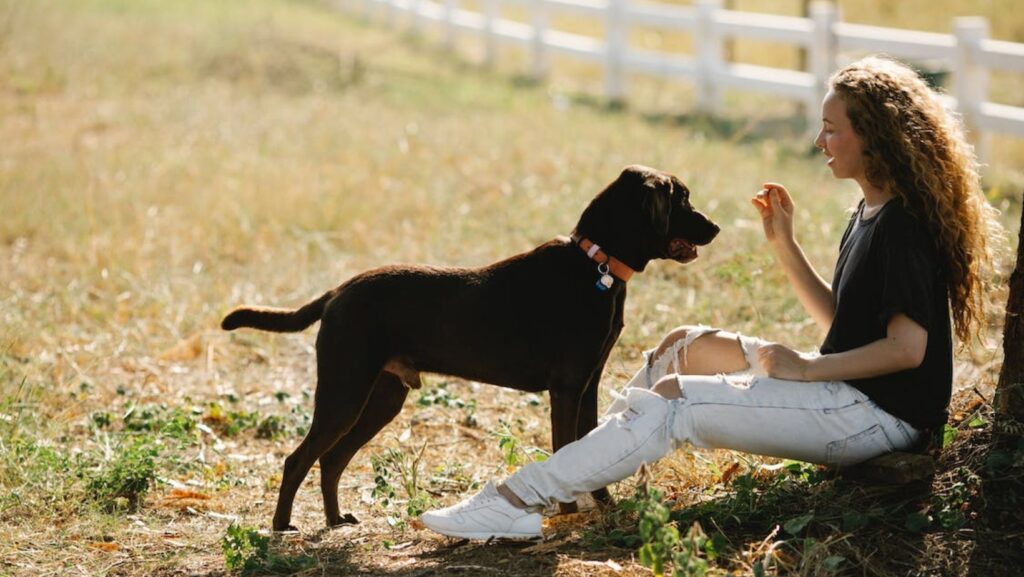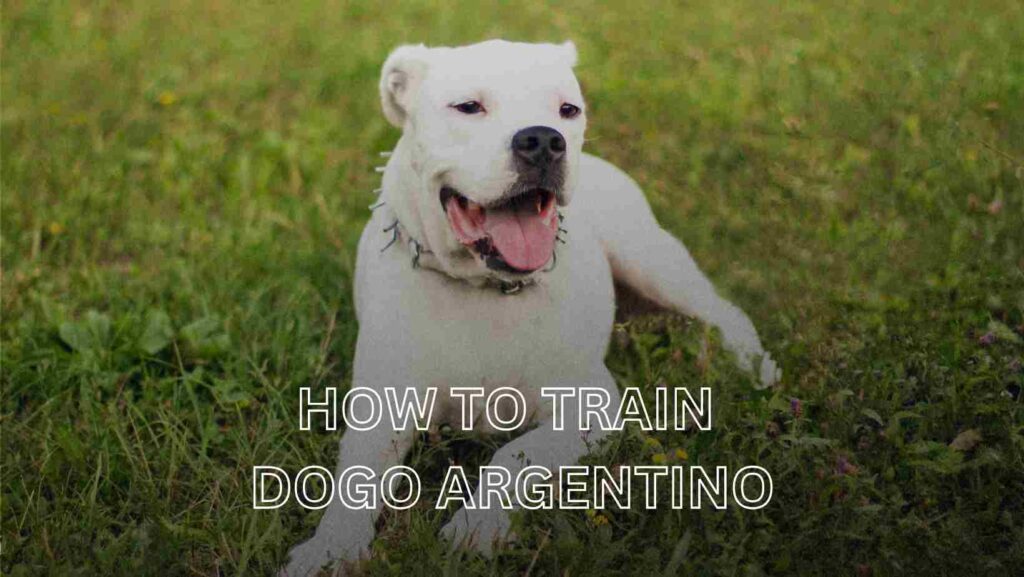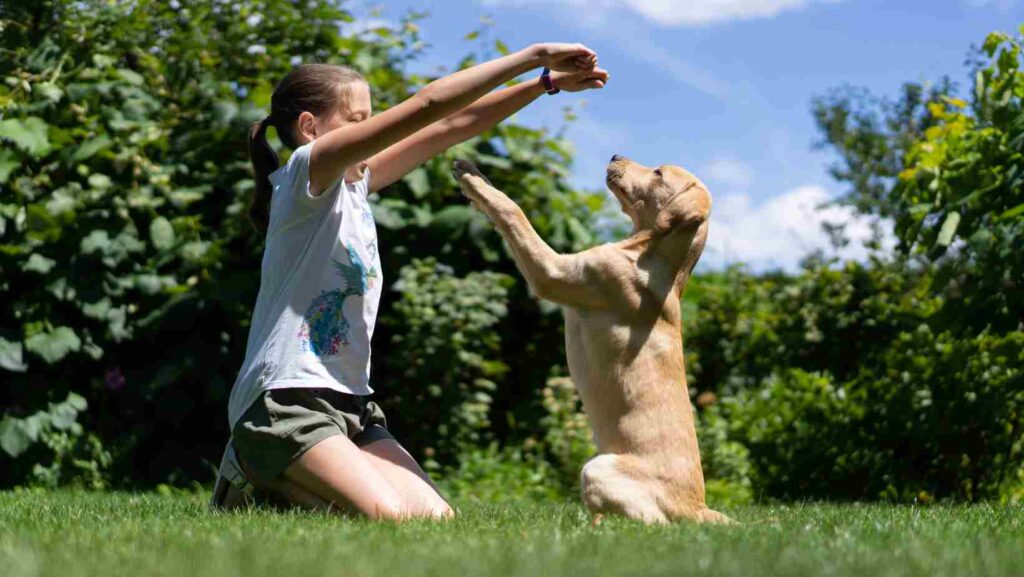Training a dog can be challenging, especially if they have a disability such as blindness or deafness. But with consistent, persistence, and the right techniques, you can train your blind and deaf dog to be a well-behaved and happy companion. This article will be about Blind Deaf Dog Training tips and trciks.
Understanding Your Blind and Deaf Dog
The first step in training blind and deaf dogs is understanding their unique needs. Dogs rely heavily on their senses, including sight and hearing, to understand their environment and communicate with others, so it’s essential to be patient and understanding when working with them. It’s also crucial to provide a safe and secure environment for your dog, free of hazards or obstacles they could run into.
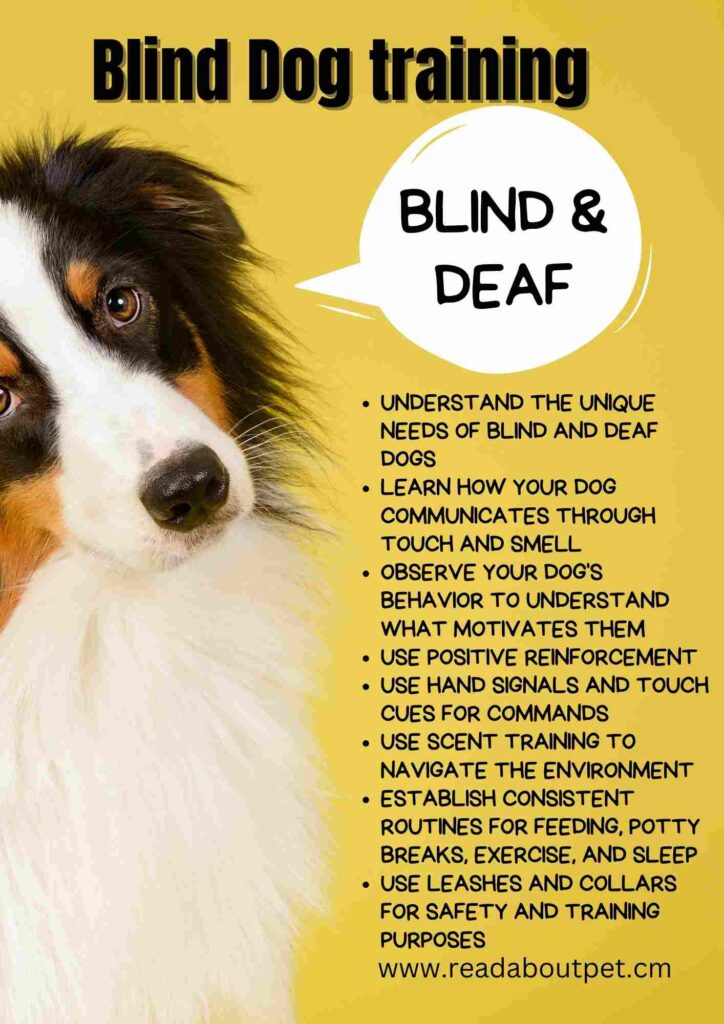
Learn How Your Dog Communicates
Since your dog can’t see or hear, it will rely on its sense of touch and smell to communicate with you. Learn how they communicate through touch, such as pawing or nudging, and how they respond to smells, such as treats or your scent.
Observe Their Behavior
Start by observing your dog and taking note of its behaviors, such as tail wagging, pacing, or barking. This way, you will better understand their communication methods and what motivates them. Observe your dog’s behavior to understand how they react to different situations. For example, if they become agitated or nervous in loud environments, you may need to avoid taking them to noisy places.
Training Techniques for Blind and Deaf Dogs
Now that you understand your dog’s unique needs, it’s time to start training them. Here are some techniques that can help:
Use Positive Reinforcement
Positive reinforcemeng is the most effective training method for training a blind and deaf dog. This method involves rewarding your dog for exhibiting the desired behavior. Use high-value treats or toys to motivate your dog and reinforce good behavior. Avoid punishing your dog, as it can cause anxiety and make the training process more challenging.
Some ways to use positive reinforcement include:
- Giving your dog treats when they exhibit good behavior
- Praising your dog with a pat or a gentle touch
- Using a clicker to signal that your dog has done something right
Using Hand Signals and Touch Cues
Since blind and deaf dogs cannot see or hear verbal cues, using hand signals and touch cues is essential. Hand signals can communicate commands like sit, stay, or come. Touch cues, such as tapping your dog’s shoulder, can get your dog’s attention or indicate a change in direction.
Choose a few basic commands and establish a specific hand signal or touch cue for each. Use these signals consistently during training sessions, and reward your dog with treats and praise for following them correctly.
Some ways to use hand signals and touch cues include:
- For the “sit” command, you can place your hand on your dog’s back and gently push down until they sit.
- For the “down” command, you can touch your dog’s chest and guide them down to the ground.
- For the “stay” command, you can place your hand in front of your dog’s face and hold it until you are ready to release them.
- For the “come” command, tap your dog’s shoulder or wave your hand in front of their nose to get their attention, then guide them towards you with a touch cue.
Scent Training
Scent training can be an effective way to teach blind and deaf dogs how to navigate their environment. You can use scents to signal specific locations, such as the entrance to your home or their bed. Use a specific scent, such as lavender, and associate it with a particular location. Allow your dog to sniff the scent and guide them to the location. Repeat this process until your dog can independently associate the scent with the location.
Here are some ways to use scent training for training a blind and deaf dog:
- Use to indicate different locations or objects. For example, you could use a lavender-scented toy to indicate where your dog’s bed is located.
- Use it to help your dog navigate. You could put a drop of vanilla extract on the floor to create a trail leading to their food bowl or to indicate the location of the front door.
- Use to indicate different behaviors. For example, you could use a citrus scent to indicate “stop” or “wait” and a peppermint scent to indicate “go” or “move forward.”
- Use it as a reward for good behavior. You could use treats with different scents to indicate different rewards, such as a bacon-scented treat for sitting or a chicken-scented treat for coming when called.
Establish Routines
Dogs thrive on routines, so it’s important to establish consistent routines for your blind and deaf dog. This includes feeding schedules, potty breaks, and exercise routines. Stick to the same daily routines to help your dog feel secure and comfortable.
Here are some ways to establish a routine:
- Feeding Schedule: Establish a consistent feeding schedule for your dog. Feed them at the same time daily and in the same location. This will help them learn when to eat and reduce their anxiety.
- Potty Breaks: Take your dog outside for potty breaks at regular intervals throughout the day. Choose a designated spot in your yard and use the same verbal and physical cues each time to help your dog understand what you want them to do.
- Exercise Routine: Develop an exercise routine for your dog, including regular walks and playtime. This will help them burn off energy and stay healthy.
- Sleep Schedule: Dogs need plenty of sleep, so establish a consistent sleep schedule for your dog. Provide them a comfortable and safe place to sleep, and keep their sleeping area quiet and free from distractions.
Use Leashes and Collars
Leashes and collars are essential for training blind and deaf dog but especially important for blind and deaf dogs. Use a collar with a tag that includes your contact information if your dog wanders off. I recommend using personalized collars with the owner’s contact details. Also, use a leash to keep your dog close to you and prevent them from getting lost or injured.
- Use a collar with a tag that includes your contact information if your dog wanders off. This is especially important for blind and deaf dogs, which may be more prone to getting lost.
- Use a leash to keep your dog close to you and prevent them from getting lost or injured. Make sure to use a sturdy, comfortable leash for your dog.
- Use a long leash to allow your dog to explore their environment while keeping them safe. A long leash can allow your dog to move around while keeping them within reach.
- Use a harness instead of a collar if your dog is prone to pulling. A harness can be more comfortable for your dog and prevent neck or throat injury.
Use a Vibrating Collar
A vibrating collar can be an excellent tool for training a blind and deaf dog. It vibrates to get the dog’s attention, allowing you to communicate with them without using sound. If you use Vibration collars, Always start with low vibration and gradually increase it if needed.
Here are some ways to use a vibrating collar for training:
- Use the vibration as a cue: You can use the vibration as a cue to get your dog’s attention. For example, you can vibrate the collar to signal it’s time for a walk.
- Use it as a reward: You can also use the vibration when your dog performs a desired behavior. For example, when your dog sits on command, you can vibrate the collar to signal that it did well.
- Use it to redirect behavior: If your dog engages in unwanted behavior, such as barking excessively, you can vibrate the collar to redirect their attention to more appropriate behavior.
- Use it for recall training: A vibrating collar can be especially useful. If your dog wanders off, you can vibrate the collar to get attention and signal that it’s time to return to you.
- Use it for safety: Finally, a vibrating collar can be a great safety tool for blind and deaf dogs. You can use it to signal your dog to come to you in case of danger or to prevent them from wandering off into a dangerous area.
Socialization
Socialization is essential for all dogs, including those who are blind and deaf. It helps them learn how to interact with other dogs and people and can prevent anxiety and aggression. Introduce your dog to new people and animals gradually, using scent and touch cues to signal a positive interaction.
Here are some ways to include:
Sure, here are some ways to socialize a deaf and blind dog:
- Start with familiar people: Introduce your dog to people they know, such as family members, friends, or neighbors. Let them approach your dog gently, using touch signals and positive reinforcement.
- Slowly introduce new people: Once your dog is comfortable with familiar people, start introducing them to new people. Start with one person at a time and give your dog time to get used to them.
- Use scent to identify people: Since your dog cannot see or hear, it may have trouble identifying new people. You can use scent to help your dog recognize new people by giving them an item of clothing or a toy with the person’s scent.
- Take your dog on outings: Taking them on outings can help them get used to different environments and situations. Start with quiet places and gradually work up to busier places.
Common Training Challenges
Training a blind and deaf dog can be challenging, but with patience and persistence, you can overcome these common challenges:
- Lack of Communication: Communication is critical when training a blind and deaf dog. Since they can’t hear or see, you must use other methods to communicate with them. Sign language, touch signals, and scent can be effective communication methods.
- Fear and Anxiety: Blind and deaf dogs may experience fear and anxiety due to their inability to perceive their environment. They may become anxious in new situations or around new people. It’s essential to provide a calm and predictable environment for your furry friend to help them feel safe and secure.
- Distraction: Blind and deaf dogs may be easily distracted, making it challenging to get their attention. It’s essential to use high-value treats and be consistent with your training sessions to keep them focused.
- Separation Anxiety: Blind and deaf dogs may become anxious when separated from their owner. It’s essential to gradually introduce them to separation and create a routine to help them feel more secure when left alone.
- Health Issues: Blind and deaf dogs may have additional health issues, such as dental problems or arthritis, impacting their ability to learn or follow commands. It’s important to consult with your veterinarian professionals to ensure your furry friend is in good health and can participate in training activities.
Tips for Training a Blind and Deaf Dog
Training a blind and deaf dog requires patience, persistence, and a lot of love. Here is a list of some tips to help you while training:
- Use high-value treats to motivate your dog during training.
- Be consistent with your commands and gestures, so your dog can learn to associate them with specific actions.
- Use touch to communicate with your dog and guide them through commands.
- Be patient and take breaks if you or your dog become frustrated.
- Provide your dog a safe and secure environment, free of hazards or obstacles.
Conclusion
Training a blind and deaf dog may seem challenging, but with patience, consistency, and the right tools, it’s entirely possible. Positive reinforcement, vibration collars, and touch are all effective training techniques that can help your dog learn new commands and behaviors. Remember to be patient, consistent, and loving during the training process, and you’ll have a happy, well-trained dog in no time.
FAQ’s
Q1. Can you train a blind and deaf dog?
A: Yes, it is possible to train a dog with these impairments using positive reinforcement, tactile cues, and consistent training techniques.
Q2. Is it safe to walk a blind and deaf dog?
A: Yes, but it is essential to keep your dog on a leash and use a harness to help them navigate the environment safely.
Q3. How do I communicate with my blind and deaf dog?
A: Use touch, scent, and vibration to communicate with your dog. You can also use treats and positive reinforcement to reward good behavior.

